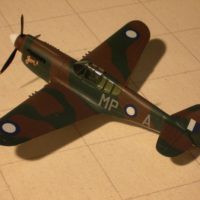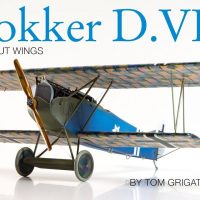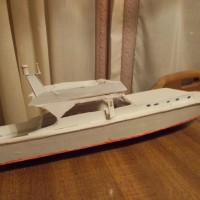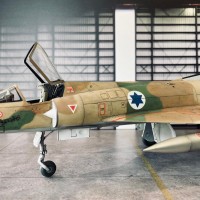A Junkers F.13 as a witness to a very special German-Polish relationship! Junkers F.13 P-PALG of Aerolot
At first glance, the Junkers F.13 shown here appears to be completely unspectacular in the standard Junkers factory colours of black and silver: an appearance that in no way suggests the intricate political and economic background against which this aircraft was used! However, a closer look at the markings on the aircraft provides an initial indication of this. They show that this Junkers F.13 was not registered in Germany, but was used by a Polish airline - although even that is not so easy to say!
The Polish-registered Aerolloyd or PLL Aerolot (from 1925 to 1927) was one of the companies that had been founded outside Germany on Hugo Junkers' initiative. Foreign countries had become of particular, even existential interest to Junkers due to the provisions of the Treaty of Versailles signed in 1919: in their original form, the statutes of the peace treaty prohibited any form of aviation in the new German republic, whether military or civilian, including the production of aeroplanes.
However, even before these provisions came into force, Hugo Junkers had presented the Junkers F.13, a commercial aircraft whose record-breaking potential would certainly revolutionise the emerging civil aviation industry. The provisions of the Treaty of Versailles must therefore have been a considerable blow to Hugo Junkers' ambitious plans.
It was contrary to Hugo Junkers' nature to admit defeat so easily: his reaction consisted of a whole bundle of activities to get the Junkers F.13 flying and thus prove its potential and bring it into business. This included the founding of airlines in neighbouring and distant countries, often with the involvement of local investors. For Eastern Europe, the year 1920 saw the founding of Lloyd Ostflug, whose Junkers F.13 routes connected the cities of Berlin, Danzig and Königsberg. The ‘Danziger Luftpost', which was influenced by Junkers, was also associated with this foundation, and its F.13s bore the distinctive coat of arms colours of the free city of Danzig: two white crosses on a yellow and black background. In addition, the „Abteilung Luftverkehr“/ ‘Air Transport Department' was set up within Junkers in December of that year.
The Polish Aerolloyd soon became part of this Junkers-controlled network. The young Polish state had had its own aviation company on paper since 1922 in the form of Polska Linja Lotnicza ‘Aerolloyd Sp. z o. o.', or Aerolloyd for short. All the technical equipment, the aeroplanes and also the technicians were provided by the Junkers factories and the Gdansk airmail service. Hugo Junkers' influence was not limited to the technical and personnel side. In order to get the company up and running, Poland had to take out long-term loans in Germany, which meant that Aerolloyd was dependent on other countries. This is also reflected in an interesting personal detail: remarkably, the first technical flight director of Aerolloyd was a certain Erhard Milch, who we will hear more about in the future. He had moved from the Gdansk airmail service to Aerolloyd.
National-minded circles in Poland agitated against this situation, which was increasingly perceived as intolerable, and in spring 1925 brought about the complete reorganisation and consistent Polonisation of the airline. By the end of the year, the German investors had been paid off and the foreign staff had been replaced by Polish technicians and pilots. The name PLL Aerolloyd was then changed to PLL Aerolot to finalise the process. Three years later, now under exclusively Polish management, Aerolot became the Polish national airline LOT, as it is still called today.
Looking at the model again with this information, it is possible to place it in chronological order: the Junkers F.13 P_PALG bears the Aerolot lettering on the cowling; its years of service in this appearance can therefore be narrowed down to the years 1925 to 1928.
About the Junkers F.13 kit from Mikro Mir
It is a little surprising that such an important and technologically significant design as the Junkers F.13 has taken so long to become available to the modelling world in 1:48 scale. Mikro has recently made this possible: the following comments are based on my experience of building two models in parallel using the new kit moulds.
Lots of light...
There is much to praise: I very much appreciated the fact that the construction was not over-complicated. A well-proportioned Junkers F.13 can be built clearly and in relatively few, easy-to-follow steps with cleanly moulded parts throughout. One example of this reduced complexity is the design of the engine compartment. Some may regret it, others will appreciate the resulting accelerated construction process: the space under the engine cowling remains completely empty.
I consider the depiction of the open cockpit to be a successful representation, which can also be a good starting point for further detailing: Belts and, if possible, the round instruments on the instrument panel (three of them are enough here!) should be retrofitted from your own side. For the two F.13s, I used corresponding etched parts from an Albatros D.V.
The interior of the passenger cabin is rudimentary. A welcome peculiarity is that the kit includes a separate door to allow for an open cabin. In order to realise this, however, a transparent part of the fuselage must first be cut with a saw; a process that I imagine will be quite difficult given the nature of the corrugated sheet metal surfaces and the brittle transparent material.
The hull from the bow to the stern is essentially made up of seven large components, the shape and dimensions of which follow the course of the corrugated metal. This means that a clean assembly with undamaged continuous corrugated sheet metal fluting is quite possible. The neat and clean casting of the moulds also allows the upper and lower sides of the wings to be produced with continuous corrugated sheet metal structures. Similar to the original, the corrugated metal joins at the leading edge, whereby the lower panelling should be slightly overlapped by the upper panelling.
The enclosed decals have an amazingly thin carrier film and are perfectly printed. They would be easy to apply - if it weren't for the ‘corrugated metal' hurdle! Only with effort, a lot of softener and mechanical help in the form of toothpicks was it possible to achieve a reasonably acceptable result. Others may find this easier and achieve a better result, but the decals produced by Cartograph themselves are certainly worthy of praise.
... a little shadow
Although what has been said so far can be read as a positive description, there are a few points that I find problematic. Even though I found the accuracy of fit to be acceptable in many parts, there are difficulties with the construction of the fuselage: I only succeeded in closing all the seams of the fuselage on both models after many attempts and some cutting of the parts. In a third pass, I would now cut the walls of the cabin interior much smaller so that they can really fit inside the fuselage. Fortunately, none of this trimming is visible from the outside.
At the beginning I praised the simplicity of the kit and in this context also noted the empty engine cowling. However, this also causes a little extra work: as two large openings have to be drilled in the cowling (the building plan does not mention this, by the way), which would allow a view of the engine, you have to remedy this yourself. I simply closed the opening with plastic parts mounted at a distance from the wall.
Don't be alarmed if the fragile-looking undercarriage parts are already broken on the cast frame, because you have to improvise here anyway and reinforce the undercarriage struts at the weak points. I managed to do this with a little wire and a small amount of cyanoacrylate so that the Junkers F.13 finally stood on stable legs.
The construction plan takes some getting used to. Both the informative value of some of the graphics and their sequence leave a lot to be desired: to be honest, I personally have not been able to find a sensible, continuous sequence in the individual sheets, which are loosely inserted into each other. (But that may be down to me personally!) However, modellers with some experience will not be put off by this. Well, this is appropriate in that Mikro Mir's interesting and most welcome kit of a Junkers F.13 is aimed primarily at this group!


























Fantastic result, Roland!
Superb writeup as well!
Spiros, thank you for this reply!
Another beauty from RO Sachsenhofer Flugzugbau AG!
RO Sachsenhofer Flugzeugbau AG thanks you back!
Excellent work particularly the interior. A nicely researched history as well.
Your words are very appreciated, Christopher!
Superb result, Roland @rosachsenhofer
Great article as well, thanks for sharing.
Thank you for this motivating reply!
Another beauty, Roland
Thank you Gary!
Looks great!